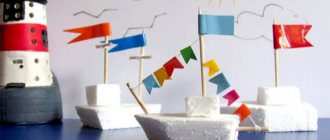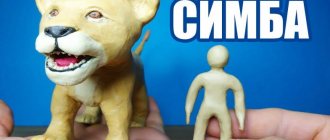Summary of a lesson on speech development in the senior group “Walk in the Forest”
Summary of a lesson on speech development in the senior group “Walk in the Forest”
Program content:
- develop the ability to compose a story using a statement scheme
- learn to adhere to the plot line when composing a story
- learn to answer questions in complete sentences
- exercise when selecting signs for an animal
- select verbs that denote the characteristic features of animals
— cultivate the ability to listen to a friend without interrupting.
Progress of the lesson:
Educator. Listen to my riddle: “There are many trees, shrubs, and flowers here. This is a home for wild animals. In summer there are a lot of berries ripening here, and after the autumn rains there are a lot of mushrooms.”
What did I talk about?
Children. About the forest.
Educator. Absolutely right. Tell me, why do you think people go to the forest in general?
Children. For mushrooms, berries, flowers, firewood, take a walk, relax.
Educator. Today I invite you to the forest. Let's sit down in the clearing and listen to the sounds of the forest (music sounds). Now tell me what you heard?
Children. The singing of birds, the knocking of a woodpecker, the sound of the wind, the rustling of leaves on the trees, etc.
Educator. What could happen to us in the forest? You can get lost in the forest, you can meet someone, you can find something. For some reason we haven’t met anyone in the forest yet, all the animals have hidden, let’s look for them. Game "Find who is hiding." Who did we find?
Children. A hare hid behind a bush.
Educator. Why did you decide so?
Children. Because there are bunny ears sticking out from behind the bush.
Educator. Now, let's play the game “Name the Animal Family.” Children take a picture and tell what they see (you can see a fox with cubs in the forest).
Game “What is he doing? " What is the sun doing in the forest? The sun is shining, warming, baking. What does the wind do? The wind blows, blows, refreshes. What does rain do? It goes, it pours, it drips. What are people doing in the forest? They relax, listen to birdsong, admire nature, breathe fresh air, pick mushrooms and berries. What are the animals doing in the forest? They live, eat, play, etc.
Physical education minute
We follow each other, the forest and the green meadow,
Butterflies fly around, circle, flutter in the air,
They flew into the clearing and sat quietly on the flowers.
The children sit at the tables. Game “Match the words to the picture.”
Educator. Imagine that Masha met a hare in the forest (a picture or toy is placed on the table). What kind of hare is he? (fluffy, funny, cowardly). What can a hare do? Jump, run, chew bark. Now imagine that Masha met a hedgehog. What is he like?
Children. Prickly, fast.
Educator. What can a hedgehog do?
Children. Hide in the leaves, in the grass, collect mushrooms.
The fox and squirrel are treated similarly.
Educator. Let's come up with a story about the girl Masha and the hare, I will start the story, and you will continue it. Once Masha went into the forest for... mushrooms. I dialed... (a full basket of mushrooms). Suddenly a long-eared... (hare) ran out from behind the bushes. He was not alone, the whole hare family was with him. They all played hide and seek and they started calling Masha... (“Play Masha with us.”) The eldest bunny had the longest... (ears). He hid behind... (bush). He hid behind... (bush). His ears were peeking out from behind the bush, so he was immediately... (found). Everyone had a lot of... (fun). Well done, they helped me write a story, and now I invite you to write your own story about Masha’s adventures in the forest. And picture diagrams will help us with this (children choose pictures and make a narrative diagram). Well done, each of you wrote an interesting story.
Summary of a lesson with children of the senior group 5-6 years old “Walk in the forest”
Tasks:
• Establishing relationships between a psychologist and a subgroup of children and children among themselves • Development of arbitrariness of behavior and self-control • Development of emotionally expressive movements and their coordination • Relief of psycho-emotional stress.
Materials for the lesson:
Audio recording “Forest voices” (birds singing, the murmuring of a stream, the buzzing of insects, the sound of the wind, etc.), audio recording - the sound of rain • A medium-sized soft ball (you can take a ball filled with small balls)
Game exercise. "Echo".
Each child takes turns saying his name, clapping it with his hands, for example Ka-cha, and the rest of the children repeat after him in unison, like an echo.
Questions for children: - How else can you repeat a name in an unusual way? – Katya, how did you feel when the guys repeated your name? "Walk in the Woods"
A psychologist invites children to take a walk in an imaginary forest.
Children repeat the movements of the psychologist: they walk quietly, on tiptoe, so as not to wake up the bear, step over dead wood, move sideways along a narrow path around which nettles grow, carefully step along a rickety bridge spanning a stream, jump over hummocks in a swamp, bend down to collect mushrooms and flowers, reaching up for nuts, etc. - Guys, what kind of trees, flowers, berries grow in the forest...? "Natural Phenomena".
Our forest is autumn.
The psychologist lists the signs of autumn with the children: the wind blows, trees sway, leaves fall, it rains, puddles form. The psychologist shows movements that correspond to these phenomena: “The wind is blowing” - blowing with outstretched lips; “Trees are swaying” - swaying with arms raised up. “Leaves are falling” - performs smooth movements with the hands from top to bottom. “It is raining” - perform small movements with the hands from top to bottom. “Puddles appear” - closes the hands in a ring in front of oneself. When the children remember the movements shown, the rules of the game are explained: while the music is playing, the children run and dance; as soon as the music stops, the children stop and listen to what phenomenon the psychologist will name. Children must perform movements that correspond to this phenomenon. "Stone and Traveler"
body-oriented exercise The psychologist says that after a walk you need to rest.
Invites some of the children to become “stones”, and others to become “travelers”. Children who represent stones sink to the floor, clasp their knees with their hands and sit motionless, tense. Each of the “travelers” sits down, leaning his back on the back of a child representing a stone. Then the children change roles. – Guys, what kind of “stones” were they - comfortable or uncomfortable, hard or soft? – Katya, what did you like more: being in the role of a “traveler” or a “stone” and why? "Magic rain
".
Goal:
development of expressiveness of gestures and facial expressions.
The psychologist says: “Guys, imagine that suddenly the wind blew and dark clouds rolled in and it began to rain. But it’s not simple, it’s magical and it can turn you into whoever you want.” The sound of rain is recorded and the children imitate it. – Sasha, who do you think Misha has turned into? Why? - Katya, who have you turned into? What was this character's mood? Did you enjoy being this character? Why, what is he like? "The flutter of a butterfly."
Children stand in a circle holding hands.
The psychologist says: “Close your eyes, imagine that you are in a flower meadow, and a beautiful butterfly sat in Sasha’s and my arms, we admired it, now we want to give it to you and for this we will squeeze each other’s hands and so take turns passing the “butterfly” “Sasha, what did you feel when I squeezed your hand? – How can you convey “butterfly” differently? Children and a psychologist sit on the floor, forming a circle. The psychologist asks the children to share what - Thank you guys, today you were very attentive to each other. The final stage.
the exercise? Children pass the ball to each other and take turns sharing their impressions. friend, responsive and kind, this helped you cope with all the games and tasks, have a nice day everyone!




